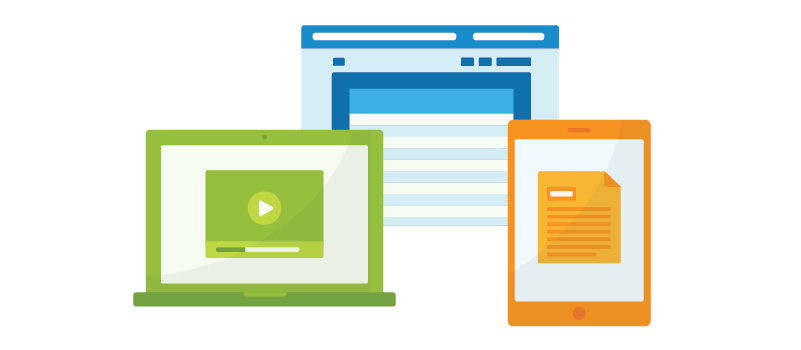Modern customer service is no longer limited to phone calls or emails. Buyers want to connect on their terms through chat, SMS, social media, or any other platform that’s convenient at the moment. An omnichannel contact center brings all of those interactions into one place, giving your team a full picture of every customer conversation, no matter where it starts or ends.
Let’s break down what an omnichannel contact center is, how it differs from other systems, and why it’s quickly becoming a standard for high-performing service teams.
Quick Takeaways
- An omnichannel contact center unifies all communication channels—phone, chat, email, SMS, and more into one platform.
- Integrated tools give agents access to full conversation histories and real-time data.
- Businesses benefit from improved efficiency, stronger insights, and better customer satisfaction.
- Customers enjoy faster, more personalized service without repeating themselves.
- Implementation requires the right platform, training, and support from a reliable provider.
Omnichannel vs. Multichannel Contact Centers
Before diving into features and benefits, it helps to understand the difference between multichannel and omnichannel systems.
A multichannel contact center allows businesses to communicate with customers on various platforms—like email, phone, or live chat—but those platforms typically operate independently. That means a customer who emails support on Monday and follows up with a phone call on Wednesday may have to start over, re-explain their issue, and talk to a different agent.
An omnichannel contact center, by contrast, integrates all those communication channels into a unified platform. Agents can see the full conversation history across channels, pick up where a previous interaction left off, and offer faster, more personalized service.
This continuity makes a major difference in customer experience. It also saves time for your team and prevents issues from slipping through the cracks.
Core Features of an Omnichannel Contact Center
Not all contact centers offer true omnichannel functionality. Here are the core features to look for:
- Unified Conversation History: Every interaction, regardless of channel, appears in one centralized interface. Agents see a customer’s full history at a glance.
- Channel Flexibility: Agents can switch between voice, chat, SMS, and email without losing context or starting a new ticket.
- CRM Integration: Relevant customer data (purchase history, open cases, preferences) can be pulled into the conversation in real time.
- Intelligent Routing: Calls and messages are routed to the most appropriate agent based on issue type, customer history, or urgency.
- Cross-Channel Analytics: Built-in reporting tools help managers track performance and identify service gaps across all touchpoints.
These features help ensure that your customer support team delivers fast, consistent responses regardless of how the conversation began.
Benefits for Businesses
An omnichannel contact center offers tangible value for support teams and business leaders alike.
- Stronger Customer Relationships: Continuity across channels builds trust and shows professionalism. Customers feel known, not passed around.
- Improved Data Visibility: Centralized reporting helps teams identify trends, monitor KPIs, and make smarter staffing or process decisions.
- Simplified Training: Because all communication flows through the same interface, onboarding new agents becomes faster and more consistent.
- Support for Hybrid Teams: Cloud-based omnichannel systems allow staff to work from anywhere without losing access to important tools or context.
Increased Agent Efficiency: Agents don’t waste time toggling between tools or rehashing conversations. They can see everything they need in one place.

These operational benefits directly impact customer satisfaction and long-term business outcomes.
Benefits for Customers
From the buyer’s perspective, an omnichannel contact center solves many common frustrations:
- No Repetition: Customers don’t have to explain their issue multiple times to different agents.
- Faster Resolutions: When agents have full context, they resolve problems faster and more accurately.
- More Convenient Access: Customers can start a chat at work, follow up via SMS later, and still get a connected response.
- Personalized Service: When agents can see past purchases, preferences, and prior issues, they can offer support that feels tailored, not transactional.
In short, customers feel like they’re talking to one helpful company, not a disjointed team using scattered tools.
Use Cases Across Industries
The flexibility of an omnichannel contact center makes it a smart fit for nearly every industry. Here are a few examples:
- Retail: A shopper asks about return policies through web chat, gets a follow-up email, then confirms their exchange via SMS.
- Healthcare: A patient calls about scheduling, receives appointment reminders by text, and asks follow-up questions through secure messaging.
- Finance: A customer initiates a loan inquiry by email, gets a phone call from an advisor, and signs documents via a secure link, all without repeating their information.
- B2B Services: A client opens a support ticket by phone, follows up in chat, and escalates to video for resolution with all notes tracked in one thread.
Each of these scenarios illustrates the power of continuity, convenience, and context. Omnichannel tools make every interaction smarter.
How to Implement an Omnichannel Contact Center
If you’re transitioning from a traditional or multichannel system, implementation requires some planning. Here’s where to start:
Audit Your Current Tools
Identify the channels you currently offer and where disconnects happen. Look for gaps in handoff, tracking, or context.
Choose a Unified Platform

Select a solution that supports the channels your customers prefer and integrates with your CRM and ticketing systems.
Plan Your Workflows
Define how agents will manage conversations across platforms. Establish clear escalation paths, routing logic, and service levels.
Train Your Team
Even if the new interface is intuitive, agents need guidance on how to balance priorities across different communication types.
Monitor and Improve
Use built-in analytics to track performance by channel, agent, and issue type. Refine processes based on customer feedback and trends.
A phased rollout—starting with your highest-volume channels—can help your team adapt gradually while minimizing disruptions.
What to Look for in a Provider
Not all vendors offer true omnichannel capabilities. Look for the following when evaluating a platform:
Single Platform, Multiple Channels
All communication should flow through one secure system, not several disconnected apps.
Reliable Cloud Infrastructure
High uptime and data redundancy keep your team online, even during outages or spikes.
CRM and Helpdesk Integrations
Look for pre-built connections to Salesforce, Zendesk, HubSpot, and similar tools.
User-Friendly Agent Interface
Your team should be able to view, manage, and respond to all messages from one dashboard.
Robust Reporting
Channel-specific and blended metrics help you understand what’s working—and what needs attention.
Compliance and Security
Ensure your platform meets industry requirements for data protection and access control.
The right provider makes it easier to offer seamless communication and scale your support operations without friction.
Is an Omnichannel Contact Center Right for You?
Customers expect fast, helpful service across every channel they use. An omnichannel contact center helps you meet that expectation by unifying conversations, preserving context, and supporting your team with smarter tools.
If your current system leads to repeated issues, dropped threads, or disconnected teams, it may be time for a better approach. Evaluate your current workflows and choose a platform that makes every customer interaction easier for them and for you.
Ready to deliver seamless customer service across every channel? Explore how Intermedia’s omnichannel contact center solutions help unify voice, chat, SMS, and more—all in one secure platform. Request a demo today.
July 7, 2025
Explore other posts on these topics: Contact Center




